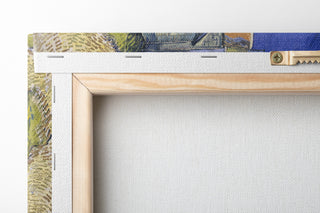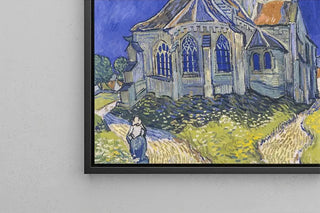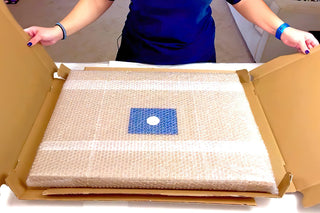Art print of the Birds of New Guinea and adjacent Papuan Islands Pl68 - John Gould


View from behind

Frame (optional)
Les Oiseaux de Nouvelle-Guinée et des îles Papoues adjacentes Pl68: an art print that takes you on a journey into the heart of avian biodiversity
The art print Les Oiseaux de Nouvelle-Guinée et des îles Papoues adjacentes Pl68 immerses us in a vibrant and colorful world, where each feather tells a story. John Gould, a British naturalist and ornithologist, masterfully captured the essence of these exotic birds with remarkable precision. The vivid hues, ranging from deep reds to bright blues, blend harmoniously, creating an atmosphere that is both lively and soothing. The lithography technique used by Gould allows for detailed rendering, from feather patterns to delicate bird expressions, offering a fascinating window into the fauna of these distant islands.
John Gould: Pioneer of Victorian Ornithology
John Gould, active in the 19th century, is often regarded as one of the greatest ornithologists of his time. His passion for birds led him to explore inaccessible regions, notably New Guinea and the Papuan Islands, where he collected specimens and created illustrations. Influenced by the naturalist movement, Gould not only documented avian diversity but also contributed to science by classifying numerous species. His works, such as this art print, testify to the importance of scientific exploration and the beauty of nature, while reflecting Victorian aesthetic sensibilities.
A decorative piece with multiple virtues
The art print of the painting Les Oiseaux de Nouvelle-Guinée et des îles Papoues adjacentes Pl68 is an ideal decorative choice for various spaces, whether a living room, office, or bedroom. Its print quality and fidelity to the original works guarantee an impressive aesthetic result, catching the eye and sparking curiosity. By incorporating this canvas into your decor, you add a touch of exoticism and sophistication, while celebrating the richness of biodiversity. This art print does more than beautify a wall; it invites reflection and escapism, making every glance a moment of contemplation.

Matte finish

View from behind

Frame (optional)
Les Oiseaux de Nouvelle-Guinée et des îles Papoues adjacentes Pl68: an art print that takes you on a journey into the heart of avian biodiversity
The art print Les Oiseaux de Nouvelle-Guinée et des îles Papoues adjacentes Pl68 immerses us in a vibrant and colorful world, where each feather tells a story. John Gould, a British naturalist and ornithologist, masterfully captured the essence of these exotic birds with remarkable precision. The vivid hues, ranging from deep reds to bright blues, blend harmoniously, creating an atmosphere that is both lively and soothing. The lithography technique used by Gould allows for detailed rendering, from feather patterns to delicate bird expressions, offering a fascinating window into the fauna of these distant islands.
John Gould: Pioneer of Victorian Ornithology
John Gould, active in the 19th century, is often regarded as one of the greatest ornithologists of his time. His passion for birds led him to explore inaccessible regions, notably New Guinea and the Papuan Islands, where he collected specimens and created illustrations. Influenced by the naturalist movement, Gould not only documented avian diversity but also contributed to science by classifying numerous species. His works, such as this art print, testify to the importance of scientific exploration and the beauty of nature, while reflecting Victorian aesthetic sensibilities.
A decorative piece with multiple virtues
The art print of the painting Les Oiseaux de Nouvelle-Guinée et des îles Papoues adjacentes Pl68 is an ideal decorative choice for various spaces, whether a living room, office, or bedroom. Its print quality and fidelity to the original works guarantee an impressive aesthetic result, catching the eye and sparking curiosity. By incorporating this canvas into your decor, you add a touch of exoticism and sophistication, while celebrating the richness of biodiversity. This art print does more than beautify a wall; it invites reflection and escapism, making every glance a moment of contemplation.






